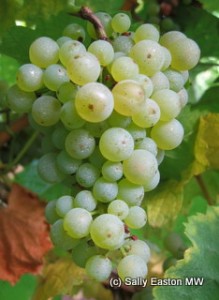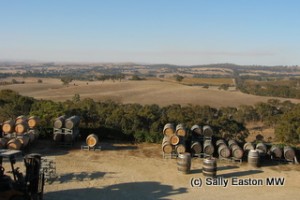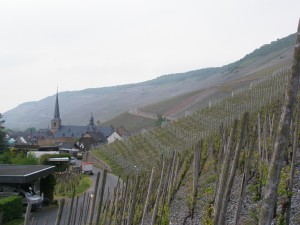The conundrum of riesling
Riesling is a much-loved variety, in the wine industry, for its precision, its focus, its flexibility of style, its ability to rather accurately reflect its origin, and not least for its high quality and intense flavours. So why is this grape such a tricky variety for many consumers?

Riesling
In the press over the years riesling has experienced ‘renaissances’ too numerous to mention, yet still it remains an uneasy wine for mainstream consumers. Its very flexibility seems to be part of the issue, or at least understanding what style is in the bottle, given a paucity of labelling information as to style.
Partly to address these various guises of riesling, in 2007 the International Riesling Foundation (IRF) was inaugurated in the USA. Alongside a strong USA contingent, directors are from across the riesling globe including Judy Finn of Neudorf Vineyards in New Zealand, Jeffrey Grosset of Grosset Wines in Australia, Johannes Hirsch of Weingut Hirsch in Austria and Christian Witte of Schloss Johannisberg in Germany.
Their first mission has been to suggest an international system to label riesling according to residual sugar levels. The IRF have developed a taste profile to help consumers get a handle on what style of wine might be inside the bottle. It has four broad categories: dry, medium-dry, medium-sweet and sweet.
Their research reported that the only major barrier to riesling trial by non-drinkers remains the perception that riesling is only a sweet wine. Yes, there are sweet riesling wines (which, it has to be said, are among the best sweet wines in the world), but there are also loads of dry riesling. Australia’s Clare Valley is a leading proponent of the bone dry style. And the many German dry rieslings too often stay on the domestic market, not being shared further afield.

IRF taste scale
In the absence of a unified way of describing riesling style to consumer, the IRF would like producers to use their taste profile on the labels of bottles to help purchasers get a feel for what’s in the bottle. The need for some sort of simple help on the label has long been recognised, and various individuals also have their own initiatives, but so far nothing has gained more widespread traction. Zind Humbrecht in Alsace, for example, developed the ‘indice’, a number ranking 1 to 5 labelled on the wine to indicate wines from bone dry to medium sweet. Also in Alsace, Paul Zinck uses his own ranking system.
A simple ranking system is just that – simple. But one of the special attributes of riesling is how it balances fruit and acidity using sweetness so that the flavour profile, texture and impact is optimised.
Riesling is a naturally a high acid grape variety, and acidity is especially retained when it’s grown in cool climates such as its homeland of Germany. Wines can be balanced and dry, especially when grown in the slightly warmer (lower acidity) Pfalz, or continuing south across the border into France’s Alsace. But with ripe fruit AND high acidity, a little of the sugars are needed to balance the wine, which still tastes dry because of the palate sensation of acidity.

Clare Valley
Such difficulties of identifying style are not restricted to the old world. From the label it is notoriously difficult to know a dry New Zealand riesling from an aromatic fruity one. It makes choosing riesling in a restaurant virtually impossible. Australia also has no recommended system for labelling according to style.
In terms of making riesling, technical data are tightly defined in Germany. Dry is defined as wines with up to 4g/l of residual sugar (all straightforward and fine, barely, if at all, noticeable sweetness to taste). Dry is also defined as a wine with 2g/l more sugar than acidity, up to a maximum of 9g/l of sugar, which means a wine in the dry category could have 7g/l acidity and 9g/l sugar, or it could have 6g/l acidity and 8g/l sugar (only 2g/l more sugar than acidity). It is very technical, and the wines do pretty much taste dry, because of the effect of the acidity.

Mosel riesling
The aim is always to create as exquisite a balance as possible between fruit and acidity and sweetness.
Given that riesling is such an appreciated variety by the cognoscenti, it is no surprise that at least three different competitions exist to judge this variety alone:
Best of Riesling. (International Riesling Competition). Started in 2000. Held in Germany, with strong German focus.
Canberra International Riesling Challenge. Started in 2000. Strong new world focus, especially Australia.
Riesling du Monde. Started in 1998. Held in France. Strong old world focus.
Results are listed each year, so finding medal winners is pretty easy. Finding whether you can buy them in your location may be trickier.
Another initiative is Riesling Rendezvous, a venture of Château Ste Michelle, of Washington state in the USA, and Dr. Loosen of the Mosel in Germany. It started in 2007, with combined trade and consumer seminars and tastings from around the riesling world.
In addition to lists of medal-winning wines, the official wine sites for riesling-producing countries and regions have plenty of information about riesling.
In Germany, the world’s leading grower of riesling by far, the Deutsches Weininstitut / German Wine Institute is the German wine industry’s marketing organization responsible for the generic promotion of the quality and sales of German wine domestically and abroad. In the UK its guise is found as Wines of Germany. In the USA there is a different Wines of Germany website, which sponsors Destination Riesling, a site for USA consumers to learn about European riesling.
The other significant riesling – inclusive generic websites are Wines of Alsace, and the Austrian Wine Marketing Board.
And, whilst no longer being maintained, The Riesling Report, has a back catalogue of information, including a piece I wrote in the Sept/Oct 2002 issue.
Please let me know of any authoritative riesling-focused organisations and competitions around the world that I’ve missed, and I’ll add them to the list.
Comments
One Response to “The conundrum of riesling”




August 22, 2010 at 3:51 pm
Great summary article about Riesling. I run a blog with a focus on German wine http://www.schiller-wine.blogspot.com and operate a facebook page that collects information on German wine http://www.facebook.com/#!/pages/Drinking-German-Wine-in-America/108548882505088?ref=ts